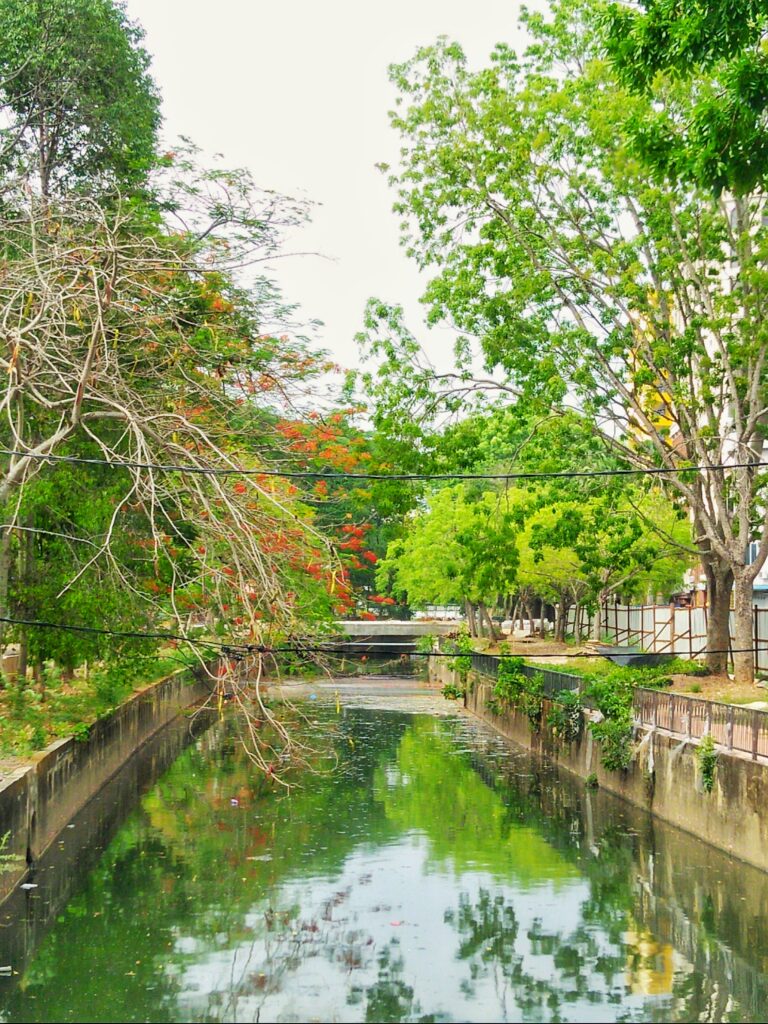Back in the 1950s, the only way for me to get to my school was to cross a canal called Wan Mat Saman Canal. The canal connects Sungai Kedah in Alor Setar to Gurun in the south, a distance of 36 kilometers. 36 kilometers may not seem impressive by today’s standards. However it must be remembered that this canal was constructed between 1885 – 1896, using simple tools during its construction. Initial diggings were done at night, guided by rows of traditional torches made of dried coconut leaves tied together, and lighted up in a straight line, called “jamung” so as to ensure the canal ran straight. The structure enabled Kedah to boost its rice production, earning the title of the Rice Bowl of Malaysia. The force behind the construction of the canal was Wan Mat Saman, the Mentri Besar of Kedah at that time.
Today, the canal remains as part of the state’s landscape. Malay houses, Chinese houses, some traditional ones, some new ones, new schools, shops, mosques and cemeteries lined the canal but the remaining part in Tandop have been covered for purpose of road-widening efforts. Several bridges are laid across the canal to enable people to cross over to the other side of town. One such bridge was the one I used daily to get to school located in Sungai Korok.
During one rainy season, the canal became swollen with rain water. The wooden bridge was bobbing up and down, swaying precariously from side to side in tempo with the wind. Some planks got dislodged from the intense shaking leaving gaps in the bridge. These gaps revealed torrential waters flowing underneath and a horrifying reminder of possibility of drowning……at least to an eight-year old.
8 year olds like me were too scared to cross to the other side to get to school. So I decided to give up the idea of going to school that day. Beyond the bridge was another hurdle to cross..the stilt-platform that lay between the bridge and the school. The stilt platform were constructed low in the midst of the mangrove swamp and easily ‘lost’ in the floods.
In those days school-going children at 7 or 8 years old, did not get chaperoned to school even if crossing the flimsy bridge was deemed dangerous. We were raised to be quite independent. We did not have parents marching into class-rooms to reprimand a teacher for punishing their daughter. We were raised to make our own decisions and to be responsible at a very young age.
The next morning, I was up and about quite early, strutting in my white-washed canvas shoes and my starched-stiff school uniform. I was ready for school. I picked up my rattan school bag and made my way towards the bridge. I walked slowly towards the bridge, picking my way carefully so as not to get my white-washed shoes soaked in the puddles of mud.
As I reached the bridge, I noticed it was completely gone. The flimsy bridge, hanging precariously over the swollen canal the day before was gone. The bridge that was supposed to take me across the canal has disappeared completely. How am I supposed to go to school?





